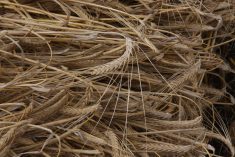Some unexpected good fortune in the cattle market is returning rewards to cow-calf producers on both sides of the border.
Heavier steer and heifer prices in the United States are at historically high levels, said market analyst Dwayne Lenz of Cattlefax based in Colorado.
“The demand is better than expected. They are about a nickel better than the industry expected,” he said. “Everybody is going to take it and run.”
Feedlots are looking for big cattle in the 800 pound and heavier range and are willing to pay better than average prices to get them.
Read Also

Vegetable oil stocks are expected to tighten this year
Global vegetable oil stocks are forecast to tighten in the 2025-26 crop year, this should bode well for canola demand.
Activity in American feedlots has been busy with placements in June 10 percent higher than last year, surprising industry analysts who had predicted a decline in numbers. About 10.8 million are on feed as of July 1, according to the United States Department of Agriculture cattle on feed report released July 21.
As an example of the strengthening market, Superior Livestock Auction in Colorado offered more than 238,000 head of calves, feeders and breeding stock July 10-14 through its video sales system.
About one third of the consignments were feeder steers ranging in size from 600 to 1,000 lb. with respectable prices across the board. About 15 percent of the consignments were heifers in the 600-925 lb. range, while the rest consisted of lighter steers, cows and a small sample of breeding stock.
Prices for the 800 lb. and heavier steers ranged from $112 to $124 US per hundredweight. The Canadian dollar is valued at about 87 cents US so the cash to cash spread between Canada and the United States is nearly $7 per cwt.
Serious drought in cow producing Great Plains states that started last fall and has continued to dry pastures forced early shipments of all classes. However, movement around the U.S. is active with no price plunges. Feeder imports also remain healthy with cattle coming in from Canada and Mexico to meet demand.
Mexico ships about one million feeders per year and Canada is back to pre-BSE export levels although only cattle younger than 30 months can move.
In 2001 as of July 14, 589,331 in the younger than 30-month age group went south. When cow and bull exports are added, the total was 609,523.
In 2002 when most of Western Canada was plagued with drought,
709,793 head were exported. That included 113,623 cows and bulls.
The border reopened to live youthful cattle last year. To July 15 this year, 533,256 left the country of which 346,566 were finished cattle going directly to slaughter.
A return to healthy markets is good for all, said Blair Vold, owner of Vold, Jones and Vold at Ponoka, Alta.
“Prices were strong and I hope they stay that way. It’s going to be a good fall.”
Yearlings are starting to come to market and demand is good.
The July 21 Canadian satellite sale saw more than 4,675 head sell but Vold was unable to determine if any went to the U.S. He suspects most stayed in Alberta or were shipped to Quebec where the steer market has strengthened in the last few years.
“As far as American participation, there were no American bidders on the satellite,” he said. If clients used an order buyer there is no way to check their system to analyze the cattle destination.
The satellite sale saw steers 880-900 lb. range in price from $110-$122 per cwt. while heifers sold from $106-$112 per cwt. Prices were similar at the regular live auction on July 19.
The sale also offered 276 cows selling from $33.75-$34.50 per cwt.
Cow prices have improved somewhat but when the American border opens to commercial beef and cattle older than 30 months of age, Vold expects a healthy price improvement. Canada cannot use all the commercial beef it produces so when shipments resume to the U.S., prices should be better because there is a demand for that product in various American markets.

















